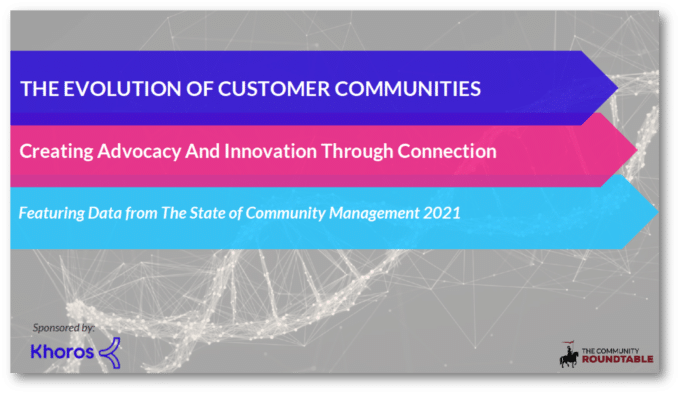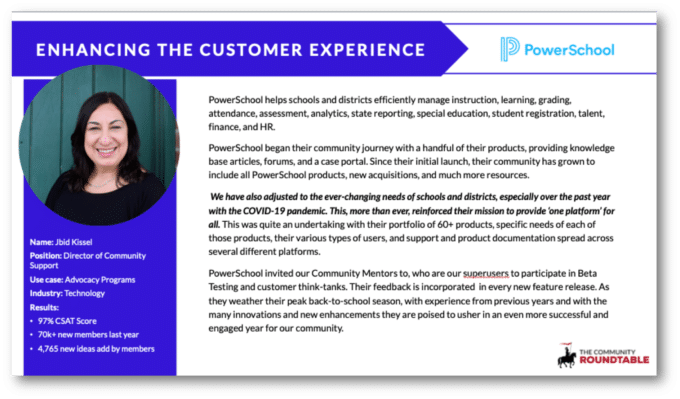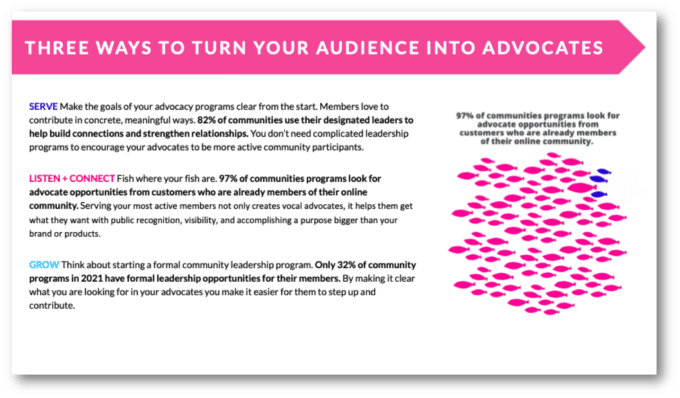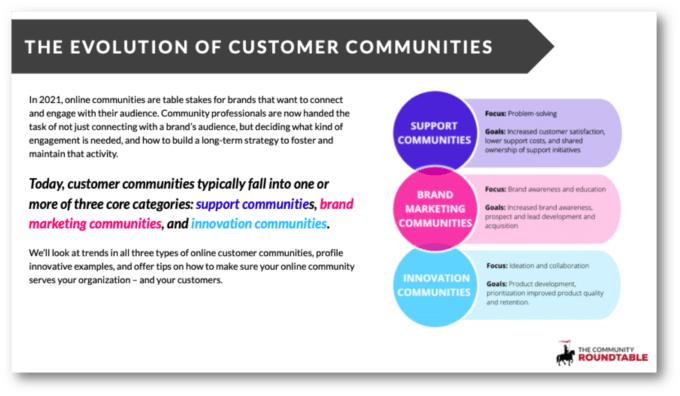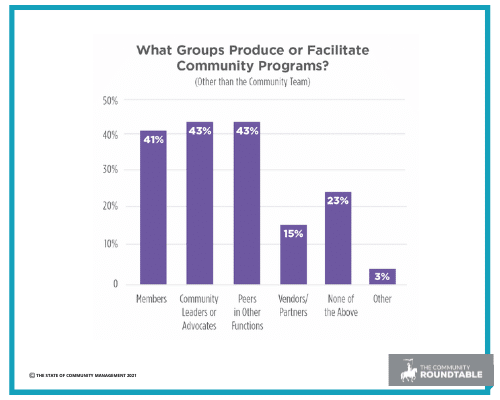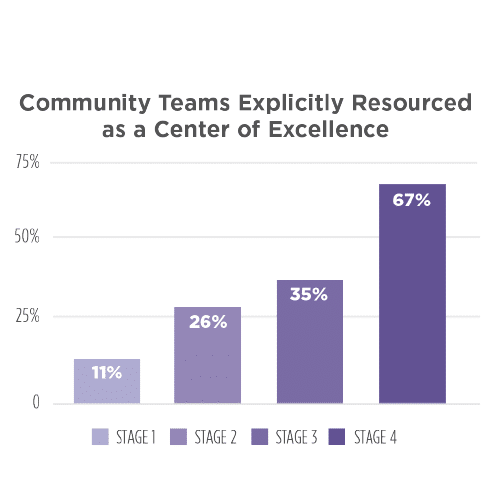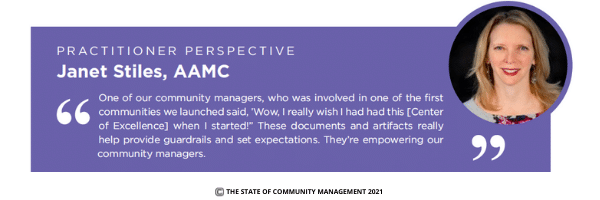Over the last two years, the place of community in organizations shifted, with community programs becoming a commonly required investment at all types of companies. The COVID-19 pandemic tipped communities from a nice-to-have to a must-have. Suddenly, the value of connecting employees and customers via an equitable and widely accessible digital network was obvious.
Well, obviously to community professionals. It’s not always easy to get organizational leaders on board with the resources and support needed to build comprehensive online community programs.
In this new look at data from the State of Community Management 2021 research, Foundations for Community Success explores:
- Checking your community health: How do you decide what defines a healthy community for your use case?
- Contributing to organizational success: With community becoming visible across the organization, it’s more important than ever to make sure your community directly contributes to defining organizational outcomes. How can you ensure that your community is aligned with business goals?
- Building for long-term success: Community hasn’t ever been a ‘build it and they will come’ proposition. How can you use meaningful content and programs to lay the foundation for long-term engagement and success?
Based on the 2021 State of Community Management research, Foundations of Community Success was produced by The Community Roundtable and made possible with support from Higher Logic.
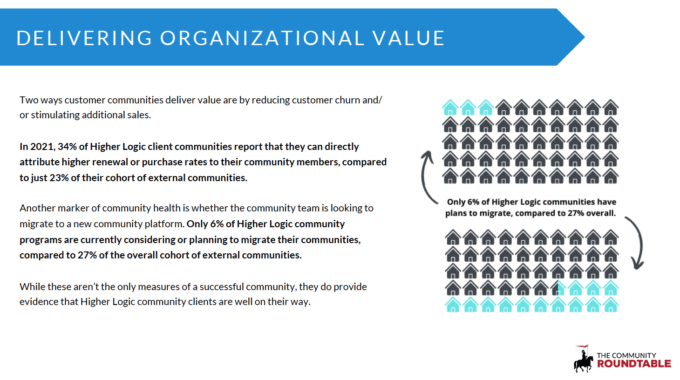
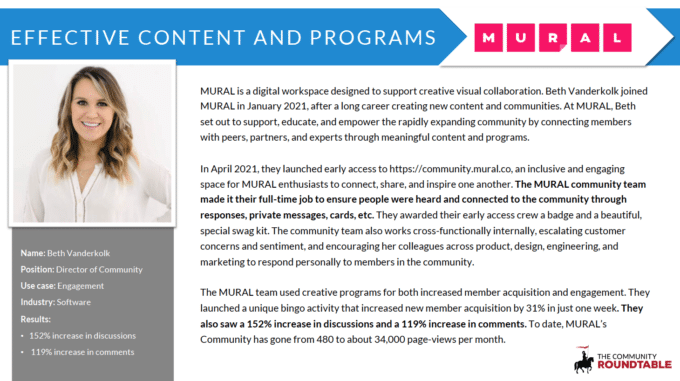
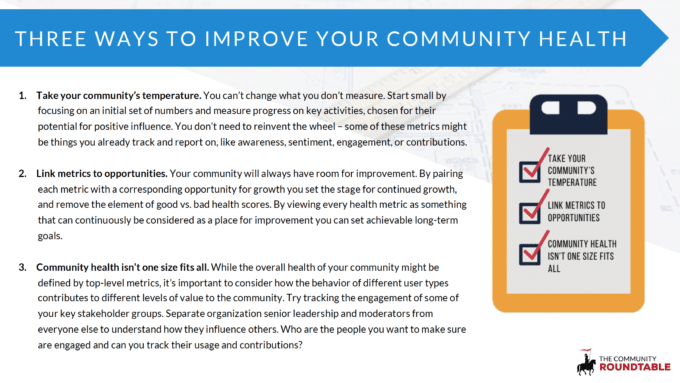
Download the ebook here.
